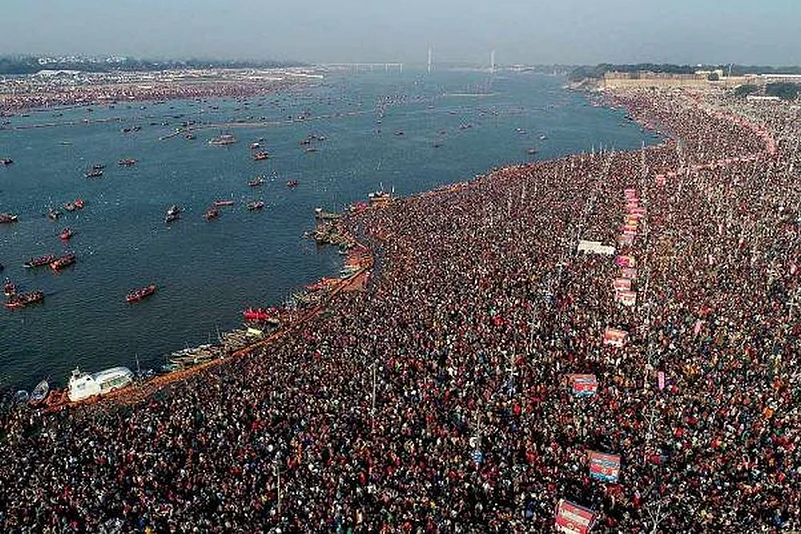To prevent deadly stampedes and manage dense crowds using minimal manpower in huge public gatherings like the Kumbh Mela and the Hajj, scientists at the IIT Madras have managed to develop an algorithm.
Using a computer simulation, researchers can intelligently plan where to place police personnel to quickly quell disturbances in a crowd that could otherwise lead to panic and chaos.
The research, published in the journal Physical Review Letters, can also help design safe evacuation procedures for events and locations that witness high footfall.
"Couple of years ago the Elphinstone bridge tragedy took place in Mumbai. It was a very unfortunate event that we thought could have been prevented by understanding the physics of stampede," said Mahesh Panchagnula, a professor at Indian Institute of Technology (IIT) Madras.
Advertisement
"If we know how these events start and how they propagate through a crowd, there are ways of mitigating it," he told PTI.
"These kinds of stampedes have clear patterns in how they start. We wanted to understand those early signs and figure out how you place the police people, or what we call 'gamechangers', who then direct the crowd in a way that would prevent stampede," Panchagnula said.
The ongoing Kumbh Mela, a Hindu pilgrimage at Allahabad, is one of the world's largest religious gatherings. Up to two crore people taking a dip in the river on some days, making the event a hot spot for mishaps that could put thousands at risk.
Advertisement
In 2013, at least 42 people died after a stampede broke out at the train station in Allahabad during the festival.
Similarly, Mecca in Saudi Arabia, Islam's holiest city, is visited by millions of pilgrims every year. In 2015, a stampede caused deaths of over 2,000 pilgrims during the annual pilgrimage -- the deadliest Hajj disaster in history.
Such events call for better methods of crowd control. The physics community has been looking at this problem for a while now, researchers said.
"For example they have investigated the idea of placing barriers at certain places that would make the flow of crowd easier. It may sound counter-intuitive, but it works," he said.
"It is all about streamlining the crowd. It looks like you have placed barricades at certain places, but it helps easing the crowd flow," he added.
The research team, which includes Sumesh P Thampi and Ajinkya Kulkarni, analysed what happens when a dense crowd -- about 3-4 people per square metres -- fills into a confined space.
They said that in such gatherings the movement of the crowd resembles that of any fluid, and hence laws of fluid dynamics can be applied to predict where disturbances can arise.
"If we look at the areal videos of people circumnavigating the Kaaba in Mecca, it looks exactly like water swirling in a bucket," Panchagnula said.
Advertisement
The researchers tried to capture the simple rules that a person follows to navigate in a crowd in to a mathematical model. The predictions of the model adhered well to experimental observations, they said.
"Let's say a gathering is set to take place in Marina beach. The police will set up baricades to control the crowd. All we need is a drawing of where the barricades are being placed, and what is the size of the expected crowd," Panchagnula said.
"The simulation can predict at which points a stampede is likely to start, and the optimal points where police personnel should be deployed to quickly prevent a stampede," he said.
Advertisement
This would allow the police to design the best strategy for crowd control, with the minimum personnel. The model can also help design a better barricade system, researchers said.
Apart from helping the police personnel place themselves at strategic locations even before an event begins, the algorithm can be incorporated in future drones that can monitor crowds in real time.
"We are getting into an age where we will see more use of drones to monitor crowd motions in these large gatherings. With our model, real time feedback from such drones would be very useful," Panchagnula said.
The researchers are keen to partner with government agencies to develop intelligent crowd management strategies for future religious, political or sporting events.
Advertisement
The cost of implementing the predictive model in a real life scenario is very minimal, say scientists, as it simply informs authorities on how to best use their existing resources.
PTI
have developed an algorithm




















